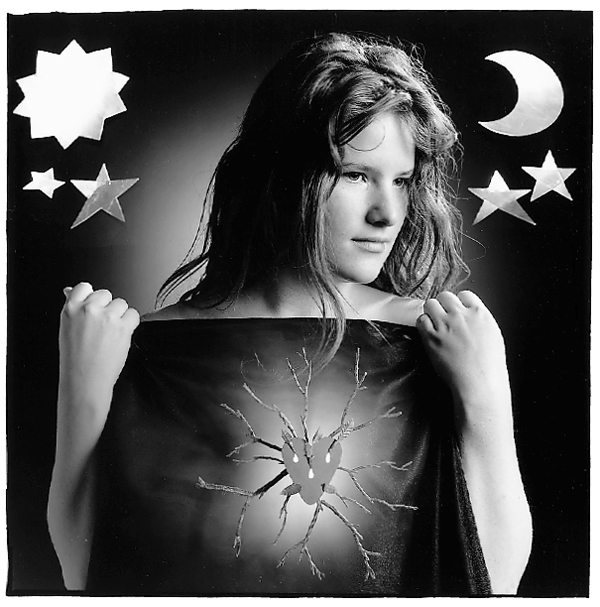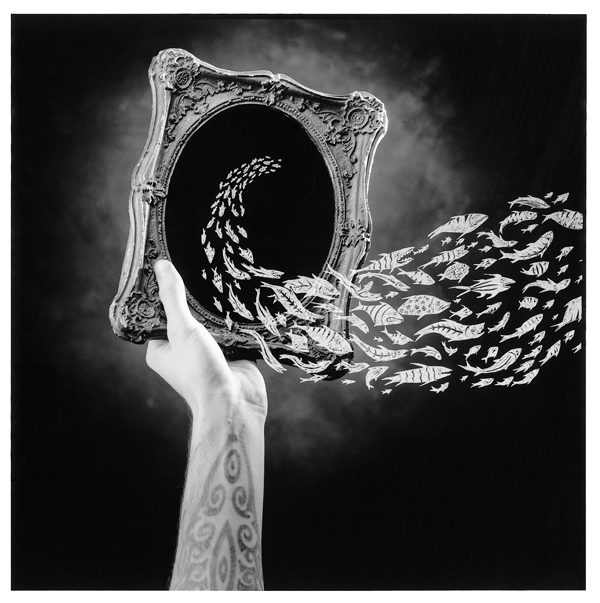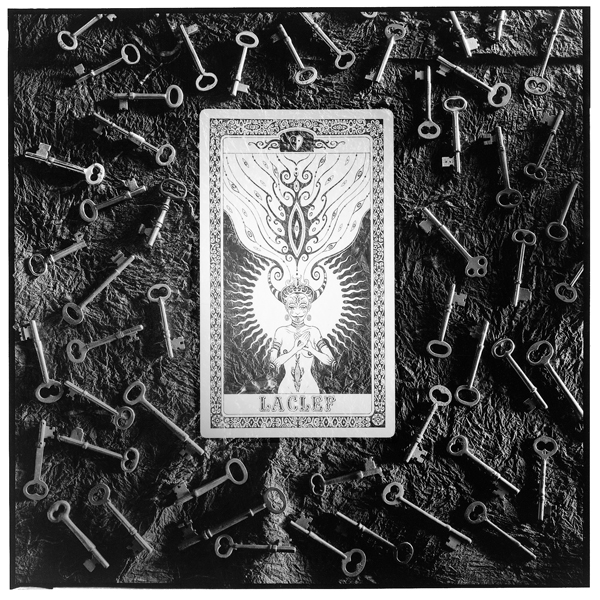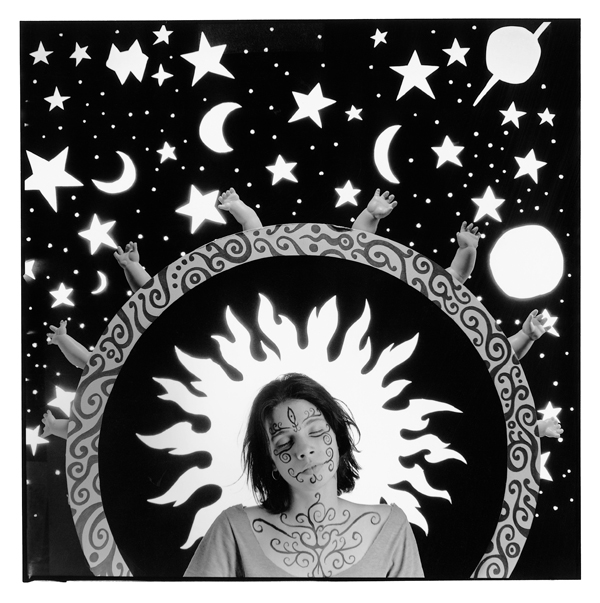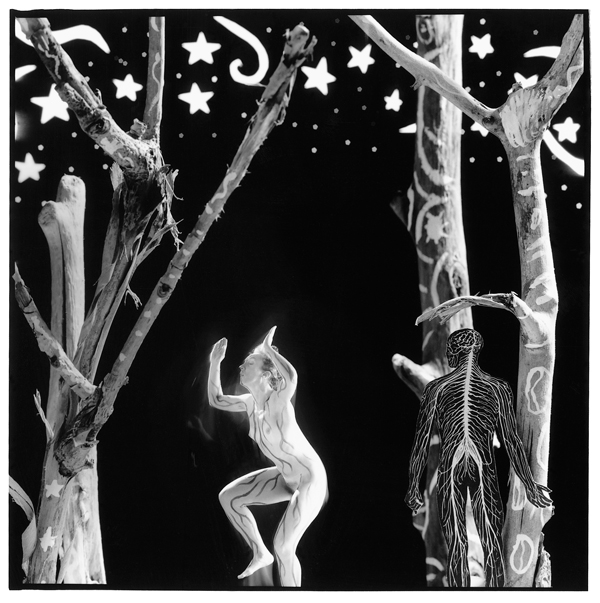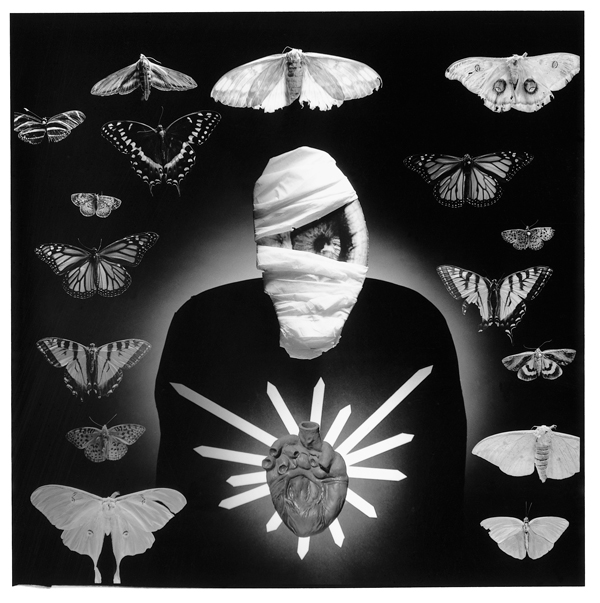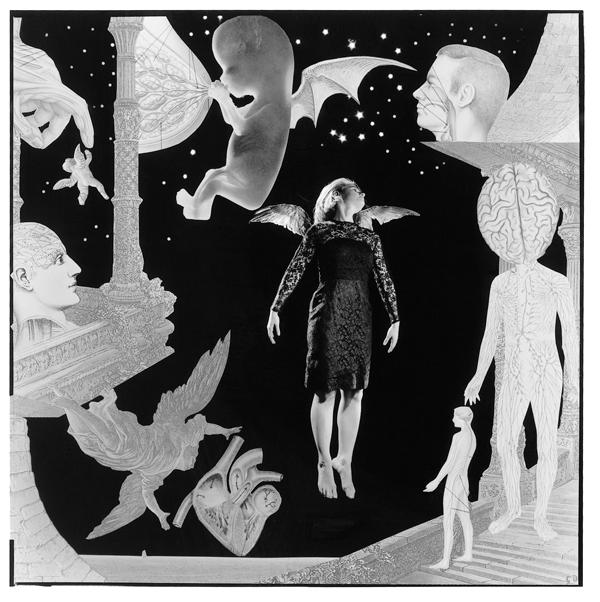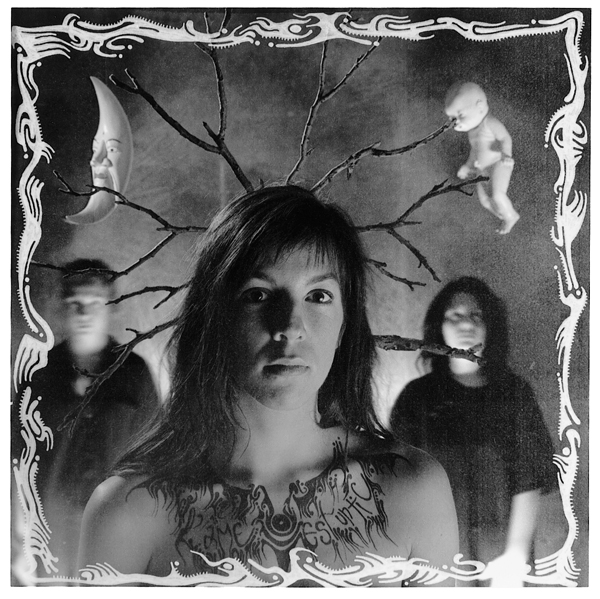[Summer 1996]
by David Liss
Marc Tessier is a poet, a storyteller, an alchemist, an artist. His films, comics, and photographs are the matter by which he transforms mundane existence and ordinary reality into a mythological universe of imaginative possibility and adventure.
He playfully fabricates magical landscapes, fairy-tale environments, and surrealistic worlds of wonder that resist linear, didactic interpretation. His photographic images are windows enticing viewers to suspend logic and step through the Looking Glass …
Fortune-telling cards are Tessier’s mystical thematic inspiration for Tarot (1994–95), an essentially biographical portrait series delightfully laden with personal and universal signs and symbols. Each composition has been theatrically constructed around a central iconic figure whose character and activities suggest altered psychological states of dreaming, fantasy, ecstasy, and cosmic contemplation.
The winged figure in Anima floats skywards the stars amid a free-floating winged fœtus, a body with exposed blood vessels and a brain for a head descending a staircase to nowhere, a diagrammatic heart hoisted by an angel, and severed heads perched on architectural structures and various other celestial debris. Disproportionate relationships of scale bear no logic. Part theatre, part scientific illustration, part natural-history diorama, and wholly bizarre.
In The Sun a naked male figure stands posed on the precipice of a cliff facing the heavens and silhouetted by a night sky humorously overcrowded with goofy, cartoon cut-out stars, moons, and suns. He is surrounded by a row of miniature figures in business suits, all with a cyclops eye set in their ear-heads. These identical two-dimensional stand-ins possibly represent the homogeneous, limited vision and narrowindedness of the straight-worlds that the heroic male figure wishes to leave behind. A tanglement of roots lead upward from the lower half of the picture, where a nude subterranean goddess, whose depiction has been appropriated from a classical painting, lies peacefully sleeping in a womb-like earthen enclosure.
Both photographs embody Tessier’s thematic preoccupation with the transcendence of physical matter and being into spiritual essence and alternate states of consciousness.
The Moon and the World each features women elaborately tattooed with cryptic glyphs and exotic designs. One of women emerges wide-eyed from a vaginal opening in the earth, the other is abandoned to a tranquil state of bliss, encircled by a fiery sun and starry night sky. Juxtaposing these two works symbolically personifies Tessier’s exploration of the transitory passages of the life-circle: birth and death, sleep and awakening, earthly existence and celestial liberation. Probing the mysterious nether worlds around and between theses dualities locates the realm of the imagination as fertile ground for charting undiscovered territories of the psyche.
Tessier’s opulent visual vocabulary incorporates elements of astrology, metaphysics, science, theatre, cinema, art history, kitsch, and humour to evoke mythological circumstance, quasi-religious ceremony, pagan ritual, and rites of passage. Any pretense of photography recording objective truths has been rejected. In Tessier’s hands the camera is employed as the ultimate contemporary conjurer’s tool for the fabrication of artifice, allegory, and enchantment.
Marc Tessier is very much an artist of his times. After studies in communications and film, he specialized in photography at Montreal’s Concordia University. Hiswork reflects the world of dreams, desire, and sensuality emerging from Arthurian mythology and imbued with an unusual spirituality.
David Liss is a Montreal artist, writer, and curator. He is an art critic for the Montreal Gazette and since April, 1995, director/curator for the Gallery of the Saidye Bronfman Centre for the Arts.

